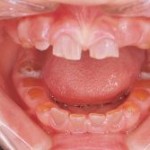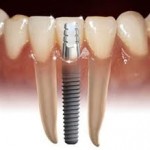Acid erosion, also known as dental erosion, is the irreversible loss of tooth structure due to chemical dissolution by acids not of bacterial origin. Dental erosion is the most common chronic disease of children ages 5–17, although it is only relatively recently that it has been recognised as a dental health problem. There is generally widespread ignorance of the damaging effects of acid erosion; this is particularly the case with erosion due to fruit juices, because they tend to be seen as healthy. Erosion is found initially in the enamel and, if unchecked, may proceed to the underlying dentin. Continue reading
Tag Archives: dentine
Tooth development Part 2
Bell stage
The bell stage is known for the histodifferentiation and morphodifferentiation that takes place. The dental organ is bell-shaped during this stage, and the majority of its cells are called stellate reticulum because of their star-shaped appearance.
THE BELL STAGE IS DIVIDED INTO EARLY BELL STAGE & LATE BELL STAGES. Continue reading
Tooth development Part 1
Tooth development or odontogenesis is the complex process by which teeth form from embryonic cells, grow, and erupt into the mouth. Although many diverse species have teeth, non-human tooth development is largely the same as in humans. For human teeth to have a healthy oral environment, enamel, dentin, cementum, and the periodontium must all develop during appropriate stages of fetal development. Primary (baby) teeth start to form between the sixth and eighth weeks, and permanent teeth begin to form in the twentieth week. If teeth do not start to develop at or near these times, they will not develop at all. Continue reading
Cracked tooth
With their more sophisticated procedures, dentists are helping people keep their teeth longer. Because people are living longer and more stressful lives, they are exposing their teeth to many more years of crack-inducing habits, such as clenching, grinding, and chewing on hard objects. These habits make our teeth more susceptible to cracks. Continue reading
Dentinogenesis imperfecta
Dentinogenesis imperfecta is an inherited disorder of the dentine affecting the primary and permanent dentitions. It can be associated with a medical condition which is known as Osteogenesis imperfecta. Continue reading
Dental care for osteogenesis imperfecta patients Part 3
Other Treatments
Dental Implants are used to replace missing teeth. Theoretically it is possible to do this successfully for a person with OI and there is anecdotal evidence that this has been accomplished. However, there are no controlled studies on the use of dental implants in people with OI and only a few case reports in the literature. The high failure, reported to be 50 per cent within 3 years of surgery is a concern.
Dental implants are somewhat like screws. In order to function, there must be enough bone in the jaw for the implant to be securely placed. After healing, a “post†is placed in the implant and an artificial tooth is attached. Good, strong healing around the implant is critical. Continue reading
How to Treat Tooth Sensitivity
Tooth sensitivity is often caused by the exposure of dentin on root areas due to receded gums or periodontal disease. Normally, the underlying dentin of the tooth (the layer that immediately surrounds the nerve) is covered by enamel in your tooth’s crown, and the gums that surround the tooth. This enamel covering may wear down over time, becoming thinner and providing less protection. Your gums can also recede over time, exposing the underlying root surface dentin. The dentin contains a large numbers of pores or tubes that run from the outside of the tooth to the nerve in the center. When the dentin is exposed, these tubes can be stimulated by changes in temperature or certain foods. Continue reading

